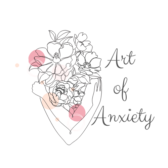When it comes to the nervous system and anxiety, understanding the sympathetic and parasympathetic responses is vital. The human body is incredible. It handles so many things at once, and most of the time, you don’t even know that it’s doing it. But it also sucks sometimes.
But if you’ve got an anxiety disorder, the human body sometimes goes into overdrive. Often panicking about things that aren’t really worth panicking about, constantly in a state of alertness.
In these cases, it can be exceptionally useful to know how our bodies work. This way, we can calm ourselves down physically, giving us the room to handle what’s coming up mentally and emotionally.
Understanding how the nervous system and anxiety operate starts with looking at our sympathetic and our parasympathetic nervous systems.
The nervous system and anxiety are inseparable. Understanding anxiety requires you to understand your body. Your nervous system is responsible for your fight or flight hormone and your trauma responses.
The Physical Symptoms of Anxiety
The nervous system plays a major role in our everyday lives. All our voluntary movement is done through the nervous system but so are many internal processes that we can’t control (known as the autonomic system). It makes sure we breathe and regulates our body temperature. But it also plays a role in our memory, thinking, feeling, processing and reading. Without it, we would be lost.
To make things easier, here are just a few of the things our autonomic system is responsible for:
- regulate your body’s internal environments
- carries brain commands to the body’s internal organs
- controls heart rate
- controls breathing rate,
- perspiration
- digestion
- hunger
- pupil dilation
- sexual arousal
- metabolism
- temperature
- inflammation
Wild right?
So, let’s break it down. The autonomic nervous system is made up of two parts:
- Sympathetic Nervous System
- Parasympathetic Nervous System
If we can get into a space where we can regulate the nervous system, then it is much easier to master our anxiety. In a world that demands the use of our sympathetic nervous system all of the time, spending time in our parasympathetic nervous system is vital to healing and restoration.
Understanding the Nervous System
An overactive sympathetic nervous system results in increased levels of adrenaline and cortisol, leading to heightened anxiety. And, if you’re in a stress response state, it can be hard to calm yourself down.
When your sympathetic nervous system is activated, your body views itself as in danger and acts accordingly. This means panicking, alertness, sweaty palms, an inability to sleep and that feeling of being on edge (sounds a lot like an anxiety disorder, right?). Understanding the physiology of stress can be a useful way to regulate yourself.

Sympathetic Nervous System and Anxiety AKA Fight or Flight
People talk about the fight, flight, freeze or fawn reflex often.
When things go wrong, what do we do?
Our sympathetic nervous system is responsible for communicating with our adrenal glands. It also has control over our vital organs. Our sympathetic nervous system is useful, especially when it comes to our survival. It helps us stay safe, perform under stressful conditions, respond to our primal fears and handle extreme, dangerous situations.
The response by the sympathetic nervous system is involuntary.
It pumps stress hormones like adrenaline and cortisol through the body, increasing our heart rate, constricting blood vessels, dilating pupils and making sure we are alert. It puts you on edge to make sure you are ready for any sort of threat. To do this, it uses up the body’s resources.
Your sympathetic nervous system is there to protect you and respond to different types of fear. But it’s not meant to be lived in all the time. In life, everything needs to be balanced. Otherwise, the world doesn’t work.
If we’re stuck in our sympathetic nervous system the whole time, our stress bucket begins to overflow, and everything falls apart. We live our lives from one panic attack to another, choosing comfort zones and safety nets in order to survive each day. This is not living and it’s not a place anyone wants to be in (even if your anxious brain tells you otherwise).
Your sympathetic nervous system wants to keep you safe, but it doesn’t always get it right.
Parasympathetic Nervous System AKA Rest and Digest
Your parasympathetic nervous system is the opposite of the sympathetic nervous system. It’s the state your body is in when there is no danger. In this safe space, your body has the room to relax, rest and restore. Instead of fight or flight, the parasympathetic nervous system allows you to rest and digest. It’s activated when you are eating, sleeping, resting, or having a good time. The parasympathetic nervous system is essential for healing and restoration. It’s in charge of digesting our food and giving our vital organs a rest. In restorative yoga, we seek to activate the parasympathetic nervous system. This allows us to achieve balance in our bodies and is essential in the world that we live in. In this state, our body replenishes its resources.
People with anxiety disorders don’t spend a lot of time in their parasympathetic nervous system. This is a problem. We need to learn how to calm the sympathetic nervous system in order to go into a rest and digest state. But it’s not easy for anxious people.
But there are ways for us to get better at it. For example, Restorative Yoga and other forms of yoga are a great way to get into your parasympathetic nervous system, but it involves stillness and being inside your mind, letting thoughts pass and resting. This is not something anxious humans are familiar with.
Sensory regulation activities or things like Trauma Release Exercises (TRE) can also be a good way to help calm down your stress response. You can also use your happiness chemicals to decrease your stress levels.

Our Bodies Work the Same, But Our Minds Don’t
While the symptoms may be similar, your anxiety is unique to you. Your body responds to certain things in a specific way because of your childhood, life traumas and all that other fun stuff. For example, I had to do a CPR and AED course on the weekend. While the rest of the humans around me were panicking about it, I was completely calm. But the next day, my body went into a state of panic because I got so overwhelmed by my own extremely high expectations of myself.
It’s a pretty normal bodily reaction to feel nervous before doing a CPR practical, but because of my life experiences, I trust my body to be able to navigate the situation with relative ease. However, I don’t trust my body to regulate feelings of overwhelm based on non-visible threats.
It took me a second or two to confirm I wasn’t spontaneously dying on my patio. But when I could effectively identify that my body was having an adrenaline rush and calm myself down, I managed to decipher why my body felt it was in a state of danger.
Context
I was studying something I never thought I’d be able to do, become a yoga teacher. The information I was absorbing was overwhelming, struggling to understand how I would remember all of the poses, contraindications, adjustments, and student names and then still present a yoga class that made them want to come back.
Overwhelmed by my obsession with perfection, I was panicking that I would never be able to accomplish my goal. As I was taking in the information, it was like I expected myself to be able to go and teach a class right then and there. I wasn’t being realistic at that moment.
But I wouldn’t have been able to unpack that if I didn’t identify my sympathetic nervous response and used techniques to calm it down.
Responding to Stress and Anxiety
The human body really is incredible. And if you spend the time learning about it and understanding it, you’ll be able to understand the power that it has.
My sympathetic nervous system used to be a little dysfunctional. It got to the point where I couldn’t leave the house, struggled to sleep and made my comfort zone so small that I could barely move. Through my own version of exposure therapy, some great anxiety books, therapy and a lot of hard work, I managed to reset it. Now I only occasionally have panic attacks about seemingly irrational things, and I can leave the house when I want.
Learning about the sympathetic and parasympathetic stress responses was a major part of my journey to master my anxiety. Let me know how you feel about the nervous system and anxiety in the comments.

Kathryn is the creator of Art of Anxiety. She was diagnosed with GAD and MDD at 16 and has been working every day to master the art of anxiety ever since. Her favorite things to do are aerial yoga and hanging out with her cats while reading a good book.




